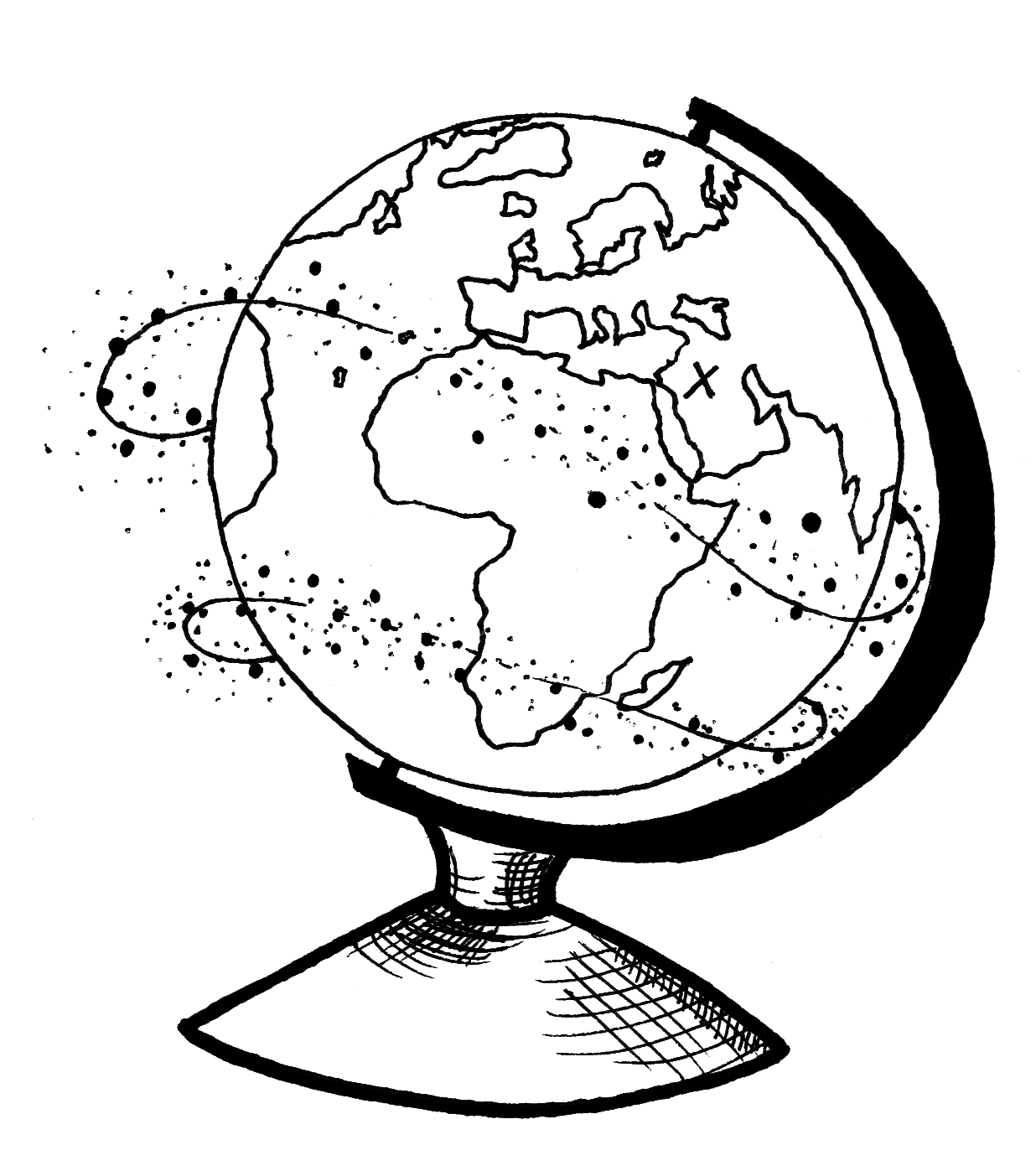It’s Assyria. With an A.
October 26, 2018
It was by a stroke of fate and a seating algorithm that on an EasyJet flight I met Nino.
Romi and I were on our return flight from London. While traveling in pairs is normally not an issue, on a plane with three-seat aisles, the third seat is left to chance. By the time it had been filled, I was half-asleep on Romi’s shoulder, and she was studying for a Swedish language quiz she had the next morning.
“Sasa, what do you think, does ‘lekplats’ use ‘en’ or ‘ett?’”
“Hmm?”
“En,” our third-seat companion quipped.
Her name was Nino—short for Ninhursag. A small golden cross hung around her neck, a gold ring adorned her olive-skinned nose, smart glasses framed her eyes and curls of brown likewise framed her face. Romi was glad to have found a study partner who was awake.
I asked what brought her to London.
“An archeology conference at Cambridge.” She pushed her purse underneath her seat. “I just finished my studies at Oxford last spring.”
“Sorry—so would this,” Romi pointed to her Swedish language book, “use ‘ett?’”
“Yep. Whenever you see a word structure like this,” Nino scribbled some marginalia on Romi’s page, “it uses ett.”
“Huh, archeology. Why did you choose to study that?” I thought back to my own archeological aspirations. I was eight and had gotten a dinosaur book for my birthday. I was thoroughly convinced that if I dug a hole deep enough in our backyard, I would find a T-Rex fossil. My archeological aspirations ended the same day my dad discovered the hole—I was grounded for a month.
Nino took a second to respond.
She loves stories. She sees storytelling as the purest form of human connection, an ancient tradition that dates back to the very beginning. The craft of molding a story to include yourself, she thinks, is an art in itself. Between high school and undergraduate studies, she studied the art of storytelling for a year, learning how to perform, dictate and entertain. Then, she traveled the world in pursuit of new tales to tell. When she found herself in Los Angeles, she joined the Street Poets, a non-profit, poetry-based, peacemaking organization dedicated to the creative process as a force for individual and community transformation. She learned to use poetry as a new means of storytelling. She taught workshops, wrote stories and performed them. That was the first part of her answer.
Second—she is Assyrian. “Not Syrian. With an ‘A,’ Assyrian.” Her parents may have Syrian and Turkish passports, but that doesn’t make them any less Assyrian.
Assyria does not exist on a modern map. In fact, it hasn’t had formal borders for almost 2,000 years. Today, there are only two million people that identify as Assyrian around the world.
And yet, I knew of Assyria … “Oh! There was a HONY [Humans of New York] on an Assyrian girl a couple of years ago!” I interrupted.
The girl that was featured spoke of the Assyrian culture as a “we” culture.
“We lean on our culture. We lean on our church. We lean on our language, which nobody else speaks. Everything is about the group … Your relatives will remind you that you should be proud to be Assyrian. You’ll be reminded that our people were slaughtered,” the HONY feature reads.
“Yes!” Her face lit up. “That was incredible! My Assyrian friends and I were talking about it for months!”
The Assyrian people are diasporic people, forcibly scattered across the Middle East at the downfall of their empire. Their culture has survived to this day because of storytelling—stories told in their language, stories about their homeland, stories passed to their children. Despite their small numbers, or rather because of their small numbers, the Assyrians form close-knit communities in their adoptive countries. Nino was raised in such a community.
Nino explained how this upbringing was both a comfort and a burden. She learned to understand that the continuity of her culture depended on the resilience of the next generation. But as she grew older and entered the Swedish schooling system, she realized that she differed greatly from the ethnic Swede. She didn’t have blonde hair or blue eyes. She had olive skin and brown curls.
“It wasn’t until last year, really, that I was able to see myself as Swedish,” she said.
The time she spent feeling lost in her twenties pushed her to travel.
“The last part of the Assyrian girl’s quote was what really resonated with me. The girl had been traveling the world alone for several months before HONY interviewed her. When you grow up in a community like I did, to leave is an act of betrayal. And yet, stories say that Assyrians have been nomads for the last 2,000 years—on the move from country to country, waiting for a time to return home. We are a diaspora. I am a diaspora,” she said. “Archeology is a way to reconcile with these stories, quite literally unearthing a narrative.”
Romi had stopped studying. I was silent. Romi was born in Israel, and I was born in Serbia. As immigrants ourselves, both of us knew this feeling.
“Funnily enough, I have returned home.”
The flight attendant’s voice was announcing our descent into Stockholm.
We landed, and Nino had to leave in a hurry, because her father was waiting for her outside Customs to drive her home. We exchanged phone numbers, and she insisted that we drop her a line should we end up visiting her little hometown.
I hope to stay in touch with Nino. But even if we don’t meet again in person, I look forward to seeing where her diasporic dust will settle.


Comments
Before submitting a comment, please review our comment policy. Some key points from the policy: